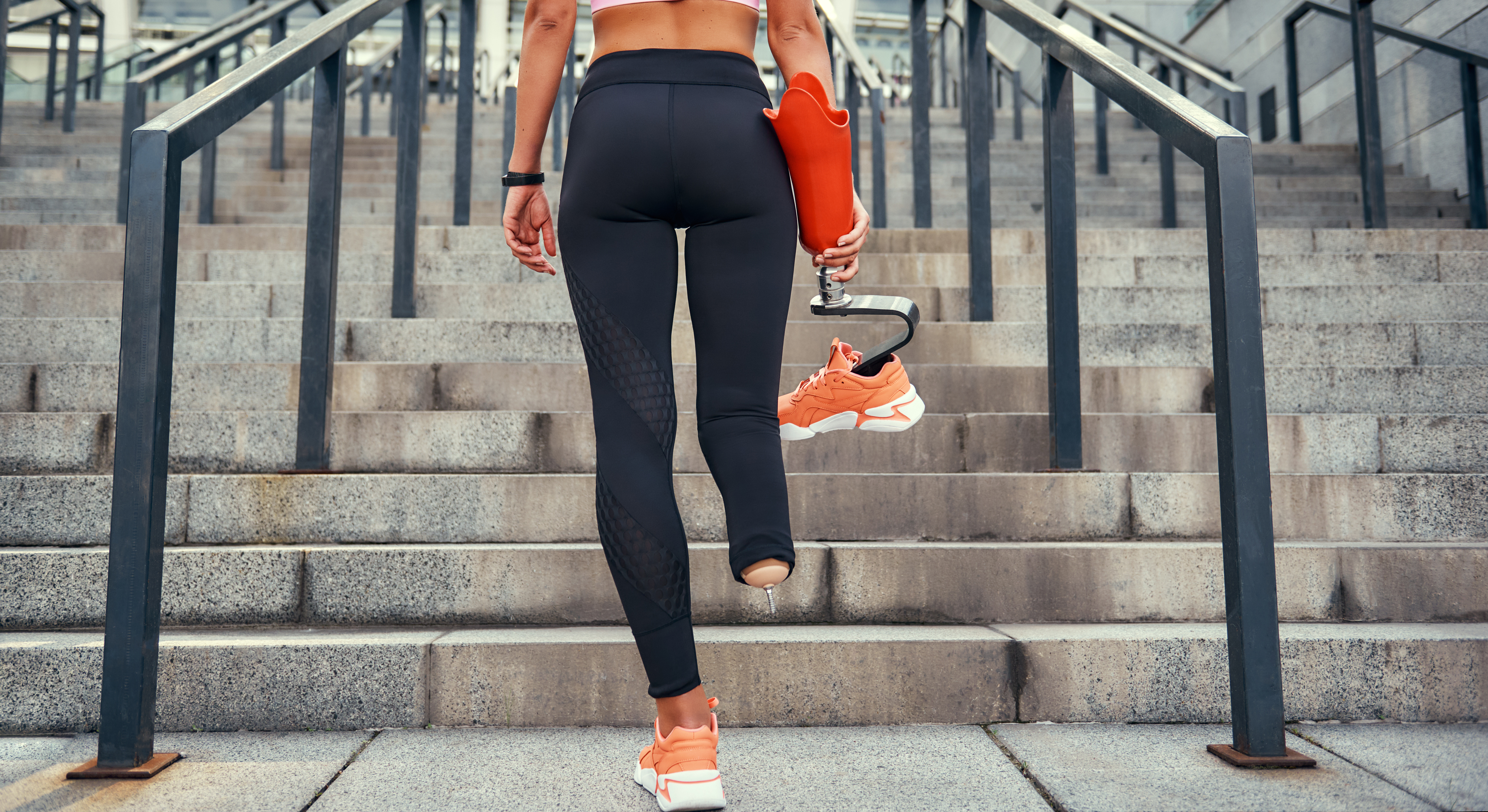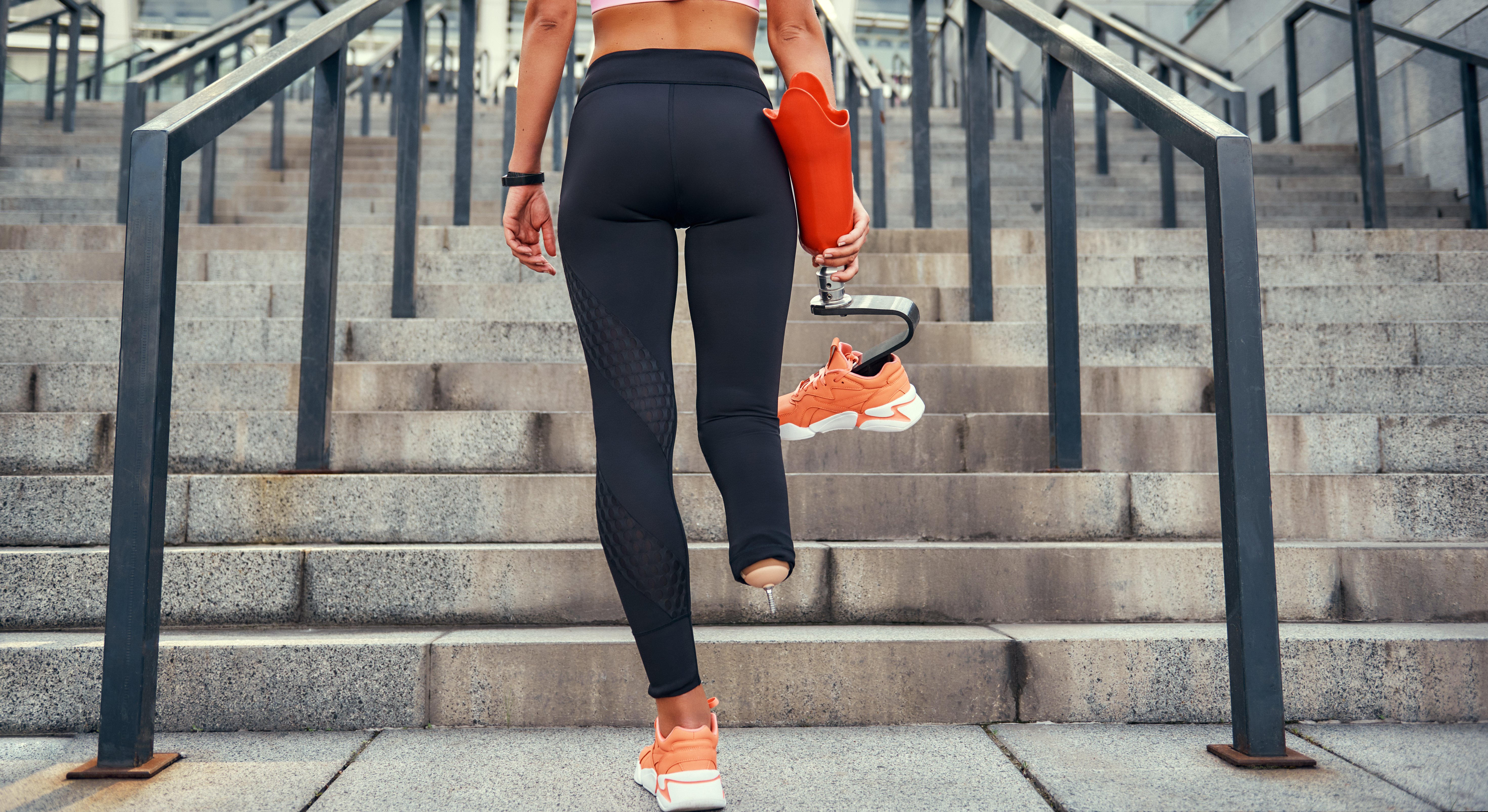You’re home from the hospital and the stitches are gone. You can now begin the healing process and prepare your lower residual limb for a prosthetic device. Here are some tips to prepare you for this transition.
Ways to Position Your Residual Limb
It’s important to keep your residual limb in the right position. This position keeps the muscles from shortening and tightening (contracture), which can cause a loss of range of motion. To avoid contracture, you need to keep your hip and knee straight. Here’s how:
- Always support the weight of your residual limb and keep it from dangling. If you’re sitting in a wheelchair, use an amputee board. This is a flat board designed to support the weight of your residual limb.
- Get used to lying flat on your stomach (proning). Proning is a position that stretches the muscles in your hip. Try to spend at least 15 minutes a day proning.
- Try not to prop your residual limb on pillows for support. Keep your residual limb flat and straight.
- Keep your residual limb close to your intact leg. If it moves outward, this can make walking with a prosthetic device difficult.
Stretch Your Muscles
To prevent contracture, it’s important that you keep your muscles strong and loose. Don’t skip exercises you were taught in the hospital, as they will come in handy when you start walking with a prosthetic device.
Desensitize Your Residual Limb
After your procedure, your residual limb will be extremely sensitive to touch. You need to desensitize it by massaging, rubbing, and tapping the end of your limb. Start with a light touch and then slowly increase pressure. This can help you prepare for the fitting of your prosthetic device.
Shape Your Residual Limb
Swelling is a common problem even after your surgical wound has healed. To help with swelling, your healthcare provider will prescribe a compression stocking to help shape your residual limb. Here are a few tips for a comfortable fitting:
- Wear your compression sock as advised. The compression sock applies pressure which reduces swelling.
- Wear your compression sock for 24 hours a day. Make sure it has a snug fit.
- Visit your prosthetist regularly. Your prosthetist can monitor your residual limb and help with the fitting process.
Proper Care and Hygiene
Proper hygiene and care of your residual limb are vital to prevent infection and speed up the healing process. Here are a few ways to keep your residual limb clean:
- Use warm water and an antibacterial soap to clean your limb at least once a day.
- Use a washcloth to gently wash the entire surface of the residual limb. Make sure to pay attention to the skin behind your knee.
- Dry your residual limb. This helps to keep moisture out of your compression sock.
- Wear a clean compression sock daily. To clean, wash each sock with mild soap and water. Dry thoroughly to remove any acid or salts left behind by sweat.
Contact Your Healthcare Provider
Remember, you are the best advocate for your own health. If something seems off, or you experience any of these sudden changes, contact your healthcare provider.
- Skin separation along the scar
- A smell coming from your residual limb
- Redness, swelling, or warmth around the scar
- Pus that is yellow, thick, or brownish gray
- An increase in pain or tenderness
- A fever higher than 100.4 °F
Whether you’re new to prosthetic devices or need a proper fitting, BioTech is here to help. Contact us today for more information.

